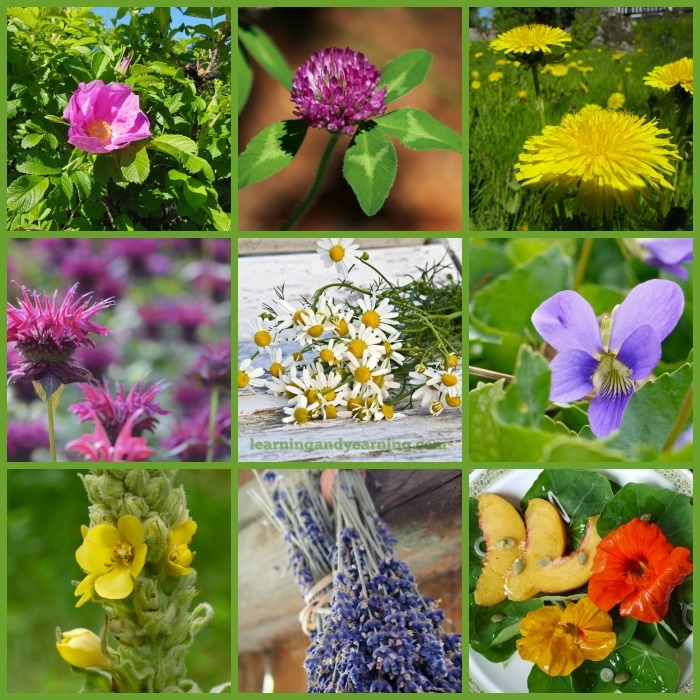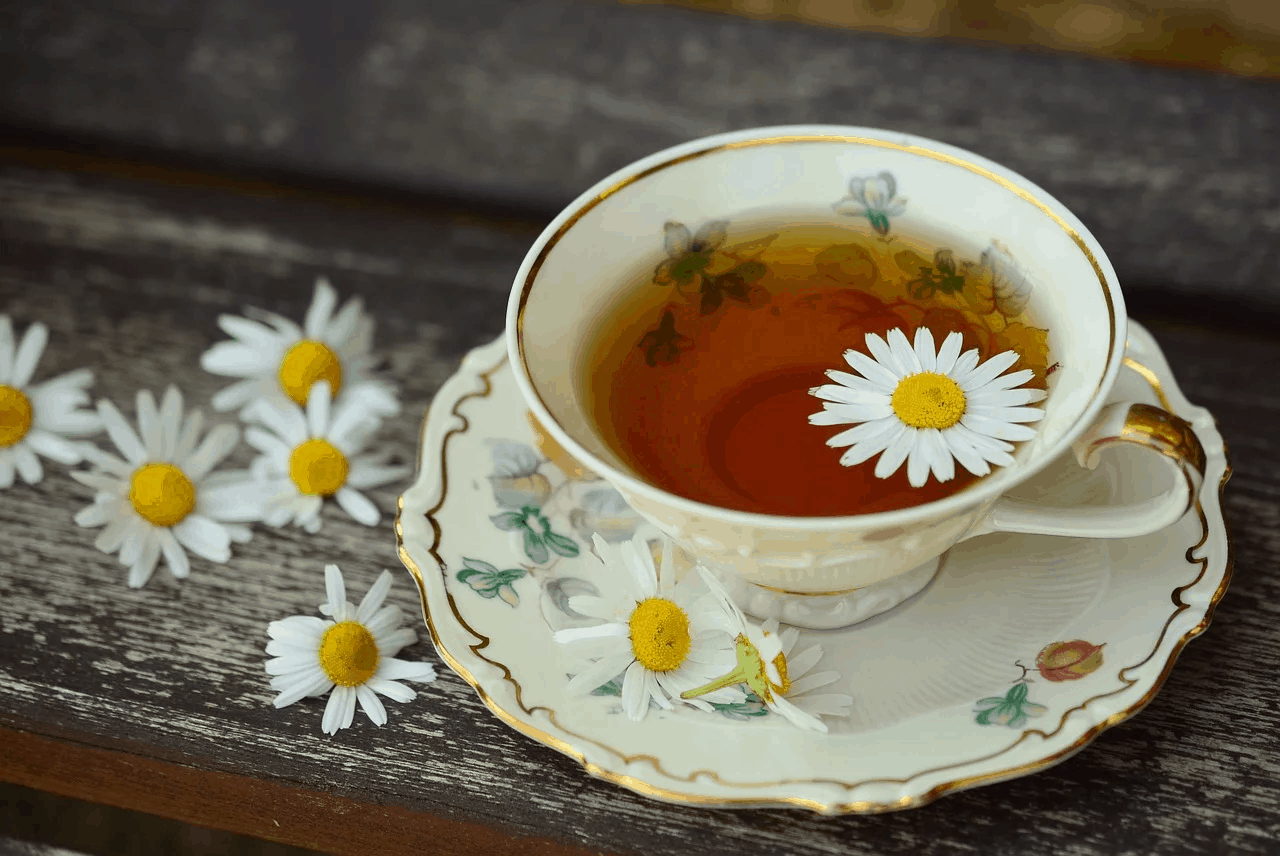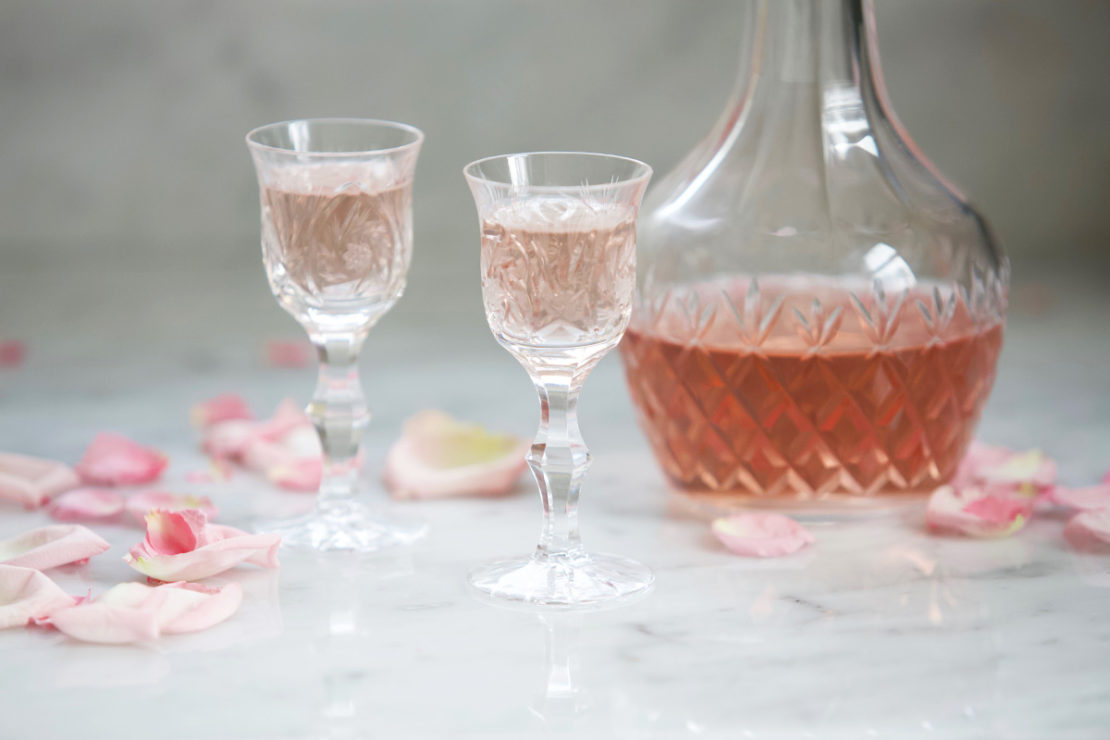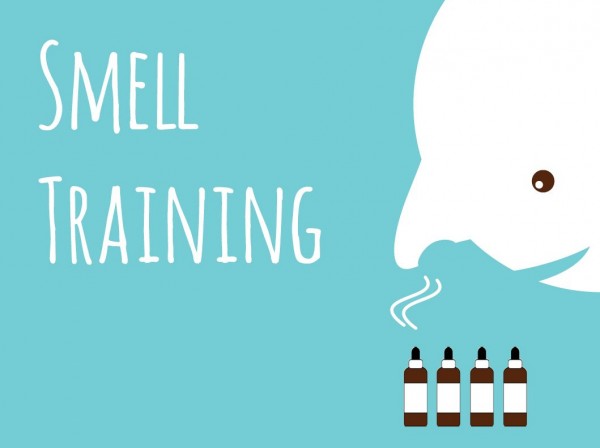
We value beauty for its own sake, yet many colorful flowers have much to offer beyond their good looks. Some can be used medicinally, others are good to eat, and many provide food and habitat for beneficial insects. These common plants and simple wildflowers can make a colourful addition to your garden design and you can take advantage of their medicinal and culinary characteristics.
As the weather warms up suburban gardens come into full bloom – and some of those flowers not only look beautiful but taste great as well. Chives, borage, broccolini, oxalis, nastertium and pineapple sage all have flowers you can use on the plate as well as in a vase.
Cautions For Eating Edible Flowers
Not all plants and flowers are edible, but there are many that are. First, you should only eat flowers or the parts of the flowers that can be properly identified as actually edible. Many plants can be confused, and this can prove to be fatal. When in doubt, don’t eat it.
Next, you must be careful when selecting flowers to eat or use in food. Do not eat flowers from a garden center, as those are most often treated with pesticides or fertilizers. This can cause sickness when consumed.
You should also avoid flowers and plants growing on the side of the road. These plants absorb run off from vehicles and chemicals from the asphalt and tar.
Grow edible flowers for salads, teas, cakes, and more in your own garden. There you can control how they are grown. They also won’t be mixed up with other, potentially dangerous flowers.
Best Edible Flowers To Grow
We’ve used flowers for health and food for centuries. It’s a testament to their plentiful benefits. While plants and flowers have evolved over time, they still offer many benefits today. Take a look at these nine healthy flowers and consider growing edible flowers in your own garden.
Edible Hibiscus (Hibiscus rosa-sinensis) or (Hibiscus Sabdariffa)
Hibiscus is one of the most commonly used edible flowers and is found in drinks, teas, relish, jam, syrups, and kombucha. It may also be used as a garnish in salads, entrees, cakes, and so much more.
Edible tropical flowers like hibiscus are found in a wide range of colors, including red, white, yellow, and several shades of pink. You can eat the blooms straight from the plant if it is grown without pesticides. The flavour is quite sweet as well as tart, almost like cranberry, which is why it is most often used for teas.
Mostly they have cranberry-like flavour with citrus overtones. Use slightly acidic petals sparingly in salads or as garnish. The flower can be dried to make an exotic tea.
Most popular edible variety of hibiscus: Roselle (Hibiscus Sabdariffa)
Health benefits: reduces blood pressure and cholesterol, and supports heart health.
Edible Dandelion (Taraxacum officinale)
Dandelions may be a stubborn garden weed, but they are highly nutritious. Packed with antioxidants, you can eat these bright yellow flowers in their entirety: leaves stems, roots, and flower heads.
Flowers are sweetest when picked young. They have a sweet, honey-like flavor. Mature flowers are bitter. Dandelion buds are tastier than the flowers: best to pick these when they are very close to the ground, tightly bunched in the center, and about the size of a small gumball. Good raw or steamed. Also made into wine. Young leaves taste good steamed, or tossed in salads. When serving a rice dish use dandelion petals like confetti over the rice.
Common options include eating them raw, adding them to salads, or brewing them into a tea. Modern cooks have also come up with other, more interesting methods.
Other Ways to eat dandelions: as dandelion wine, syrup, cordial, raw, in a stew or casserole, in salad, tea, or jelly. You can also bread and fry them, though this is more likely to be seen in a fancy restaurant than at home.
Health benefits of dandelions: a good source of antioxidants, dandelions reduce cholesterol, regulate blood sugar, reduce blood pressure and inflammation, boost your immune system, reduce risk of cancer, and aid digestion and skin complexion.
Edible Lavender (Lavandula angustifolia)
Most people enjoy lavender’s scent and calming qualities. It’s often used for beauty products, baby skincare products, as a fragrance in perfumes, and as a sleep aid in teas. However, the use of lavender doesn’t stop there.
Lavender’s sweet aroma pairs nicely with citrus fruits, chocolate, rosemary, sage, and thyme. The flower is often added to baked goods, either as a flower garnish or flavoring. Infused syrups, liqueurs, teas, and spice rubs are also made with lavender.
Health benefits of lavender: good source of vitamin A, gentle sleep aid, stress relief, aids the digestive system.
Edible Pansies (Viola X wittrockiana)
Pansies aren’t often considered on lists of edible flowers, but they really should be. Not only are they beautiful to add dishes (especially since they come in many colors), they are also very tasty. Their flavor is very mild, though it does vary based on the type of pansy. Some varieties have a very earthy, or even minty flavor, while other Pansies have a slightly sweet green or grassy flavour. If you eat only the petals, the flavor is extremely mild, but if you eat the whole flower, there is a winter, green overtone. Use them as garnishes, in fruit salads, green salad, desserts or in soups.
They’re a great addition to fruit salads, summer cocktails, savory snacks, or sugary treats. If you coat them in egg whites and sugar, they have the potential to keep for several months.
Pansies edible flowers also used for: pastries, cakes, cookies, as a garnish, in salad, on cheese logs.
Health benefits of pansies: rich source of antioxidants, reduce inflammation, high source of vitamin C, relief for eczema, hives, and itching, asthma, bronchitis, whooping cough, and congestion. Also eliminate certain bladder infections, to treat epilepsy, and alleviate symptoms of arthritis and rheumatism.
Edible Chamomile (Matricaria chamomilla)
 Chamomile is often used in teas, mostly for its calming abilities. It’s great for easing anxiety or aiding sleep. These delicate, daisy-like flowers, with their earthy, sweet flavor, have many benefits. But they’re not as easy to cook with as other edible plants. First, you should boil the flowers in a liquid to make syrups or extracts for use in baked goods and smoothies.
Chamomile is often used in teas, mostly for its calming abilities. It’s great for easing anxiety or aiding sleep. These delicate, daisy-like flowers, with their earthy, sweet flavor, have many benefits. But they’re not as easy to cook with as other edible plants. First, you should boil the flowers in a liquid to make syrups or extracts for use in baked goods and smoothies.
Health benefits of chamomile: ease your digestive system and stress, and aid sleep. Also a good source of vitamin A. It is also said to reduce menstrual pain, treat diabetes and lower blood sugar, slow or prevent osteoporosis, reduce inflammation, treat and prevent cancer, treat colds and aid with skin conditions.
Edible Calendula (Calendula officinalis)
Calendula, also known as the “poor man’s saffron” or pot marigold, has the taste of saffron when sauteed in olive oil. This spicy flower is great for deviled eggs, salads, breads, herbed butters, cheese spreads, and soups. It’s easy to grow from seed in your garden, and will bloom from early summer to late fall. Flavors range from spicy to bitter, tangy to peppery. Their sharp taste resembles saffron (also known as Poor Mans Saffron). Has pretty petals in golden-orange hues. Sprinkle them on soups, pasta or rice dishes, herb butters, and salads. Petals add a yellow tint to soups, spreads, and scrambled eggs. Only the petals are edible.
Cautions when consuming calendula: Don’t consume calendula if pregnant. It may cause extreme drowsiness if taken with allergy medications.
Health benefits of calendula: full of antioxidants and vitamin A, can keep your skin healthy and your eyes functioning properly. A salve made from the flowers is commonly used to help heal minor skin irritations and abrasions.
Edible Roses (Rosa rugosa or R. gallica officinalis)
Like pansies, eating roses isn’t a very common thing. Yet throughout time, people have eaten roses, They’re also added to baths and fountains for freshening up. Their flavor is rather fruity, like strawberries and green apples. This makes them great in teas, jams, salads, and desserts.
Some people freeze them in ice cubes to add to lemonades, sangrias, and punches. They’re also an elegant garnish on ice cream or desserts. No matter how you eat them, they are a great and healthy addition to your diet. All roses are edible, with the flavor being more pronounced in the darker varieties. In miniature varieties can garnish ice cream and desserts, or larger petals can be sprinkled on desserts or salads. Petals used in syrups, jellies, perfumed butters and sweet spreads. NOTE: Be sure to remove the bitter white portion of the petals.
Health benefits of eating roses: contains vitamin A and E, treats digestive issues and menstrual disorders, calming for skin and can reduce inflammation.
Edible Sage Flowers (Salvia officinalis)
Sage flowers are unique in that they taste of both sweet and savory flavors. Because of this, they pair well with lemon and other garden herbs. They are often used to make herbed vinegar, tea, or floral food decorations. There are many varieties of sage, but the most common one used is garden sage. While most people avoid the flowers, they are just as beneficial as the rest of the plant.
Also, Pineapple Sage does well in containers and blooms for most of the summer. It’s a good one for attracting hummingbirds. Harvest the leaves. You can dry them and use as an herbal rub on fish. Drop a few leaves into a glass of iced tea, as you would a mint leaf, for a fragrant pineapple accent. Unrelated to pineapple, pineapple sage gets its name from the flower’s sweet smell. Its mild sage flavour goes well with fruit so the flowers make a fantastic addition to fruit salads or banana smoothies. The leaves can also be used.
Health benefits of Sage Flowers: may help promote brain health, including strengthening memory. Also a source of vitamin B, calcium, manganese, vitamin K, Iron, and more. Sage may also help with oral issues, ease menopause symptoms, reduce blood sugar levels, lower bad cholesterol, and help prevent cancer.
Edible Mint Flowers (Mentha spicata)
 Most people don’t know that mint grows flowers, but many varieties of mint do. All flowers in the mint family are edible. As a matter of fact, sage also belongs to the mint family. Most people use them for teas, but you may also see mint flowers used in custards, salads, fruit salads, spring rolls, yogurt, and desserts.
Most people don’t know that mint grows flowers, but many varieties of mint do. All flowers in the mint family are edible. As a matter of fact, sage also belongs to the mint family. Most people use them for teas, but you may also see mint flowers used in custards, salads, fruit salads, spring rolls, yogurt, and desserts.
Are All Types of Mint Plants Edible? No, not every type of mint is safe to eat. Some are grown as trees or shrubs, while others are purely decorative. The best way to tell if it’s edible is by seeing how it smells. If it has a square stem and smells like mint, then it’s mint, which is edible. If it smells of mint and has a Labiate flower (usually in clusters around and close to the stem) then you are pretty safe. But rule of thumb in mycology or botany, if in doubt don’t eat it.
Health benefits of mint: a good source of vitamin A, iron, manganese, and folate. Great for eye health, and a potent source of antioxidants. It may also provide relief for irritable bowel syndrome, improve brain function, and decrease breastfeeding pain.
IMPORTANT – Some dos and don’ts!
Following are some simple guidelines to keep in mind before you eat any type of flower:
DO’S:
Eat flowers only when you are positive they are edible. If uncertain, consult a good reference book on edible flowers prior to consumption.
If pesticides are necessary, use only those products labeled for use on edible crops. No flowers is safe to eat unless it was grown organically.
Wash all flowers thoroughly before you eat them.
Introduce flowers into your diet in small quantities one species at a time. Too much of a good thing may cause problems for your digestive system.
Remove pistils and stamens from flowers before eating. Separate the flower petals from the rest of the flower just prior to use to keep wilting to a minimum.
Eat only the flower petals for most flowers except pansies violas, and Johnny-jump-ups (in which they add flavor).
If you have allergies, introduce edible flowers gradually, as they may aggravate some allergies.
DON’TS:
Do not eat flowers from florists, nurseries or garden centers. In many cases these flowers have been treated with pesticides not labeled for food crops.
Do not eat flowers picked from the side of the road. Once again, possible herbicide use eliminates these flowers as a possibility for use.
Just because flowers are served with food served at a restaurant does not mean they are edible. Know your edible flowers – as some chefs do not. It’s easy and very attractive to use flowers for garnish on plates or for decoration, but avoid using non-edible flowers this way. Many people believe that anything on the plate can be eaten. They may not know if the flower is edible or not and may be afraid to ask.







